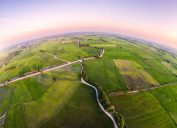30 Uplifting Winter Facts That Will Warm Your Heart
From pink snow to mushroom jerky made by squirrels, here's some winter trivia to help fight off the cold.
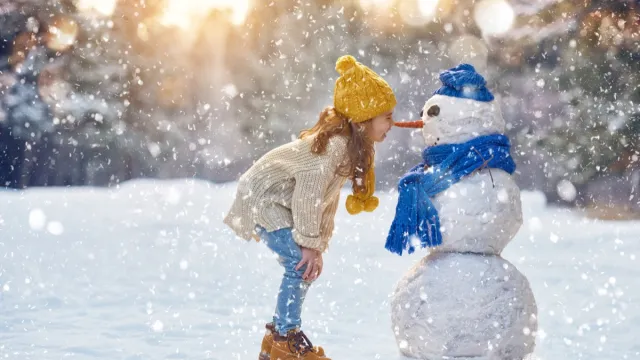
So many of us associate winter with gray skies and sub-zero temperatures. But there's so much more to the chilliest season of the year to inspire you and keep you feeling toasty all the way through February. For instance, have you heard of pink watermelon snow? And did you know that squirrels make jerky to prepare for the cold winter months? And that's not all! From incredibly tall snowpeople to a quirky hair freezing competition, here are 30 uplifting winter facts that will warm your heart this season.
1
Red squirrels make mushroom jerky to prepare for the winter.

Plenty of animals tuck away food for the winter, including red squirrels, who prepare a particularly unique snack to enjoy when the temperature drops. Along with storing seeds and nuts, the culinarily inclined critters dry out mushrooms in trees to make what National Geographic describes as "hand-made artisanal conifer-dried mushroom jerky." Yum!
2
People born during winter months are less irritable.

Santa Claus isn't the only winter figure with a jolly nature. While people born during the spring and summer months tend to have "excessively positive temperaments," they're also "more likely to experience rapid shifts in mood," according to 2011 research published in the Journal of Affective Disorder. On the other hand, those who made their entrance into the world during winter are "less likely to have irritable temperaments."
3
Thundersnow is a rare, but real, weather phenomenon.
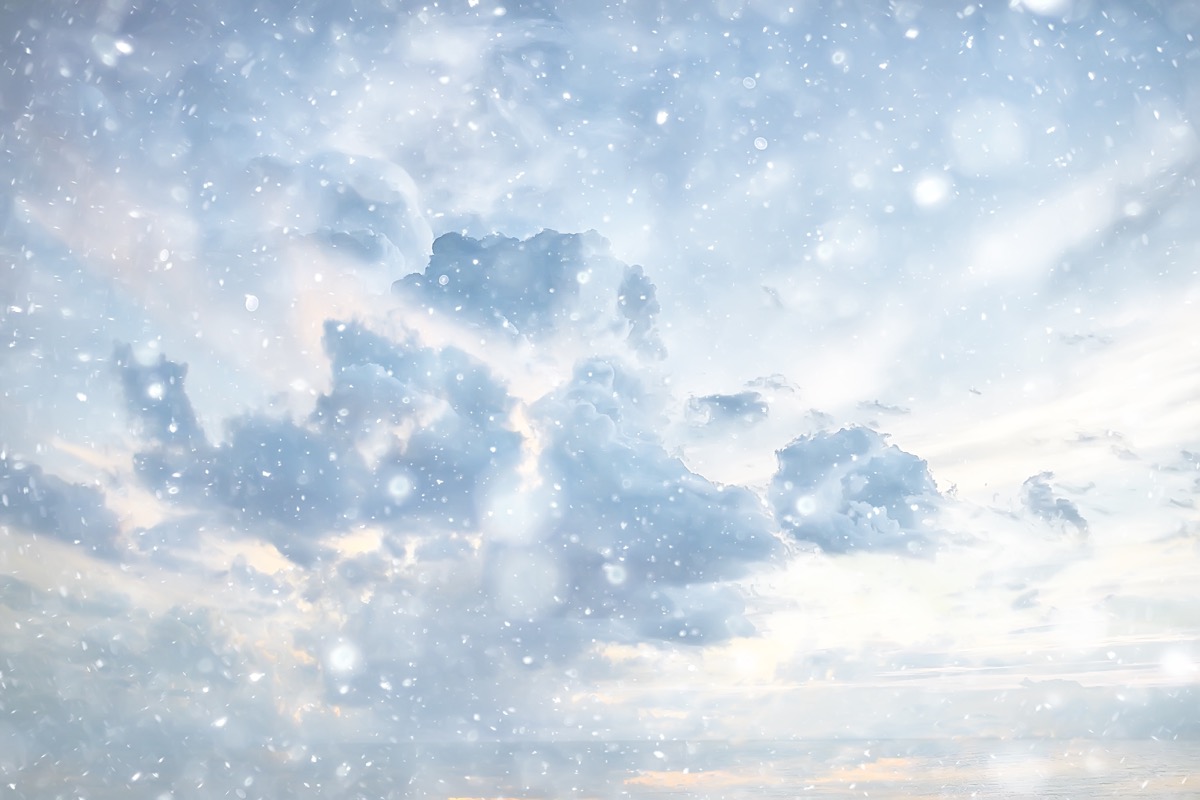
It's not unusual to hear thunder during a summer storm, but did you know that thunder can come clapping during the winter months, too? It's called thundersnow, and it's a rare weather phenomenon that refers to a snowstorm complete with both thunder and lightning. For thundersnow to occur, "the air layer closer to the ground has to be warmer than the layers above, but still cold enough to create snow," according to CNN.
4
Snow can be yellow, orange, green, and purple.
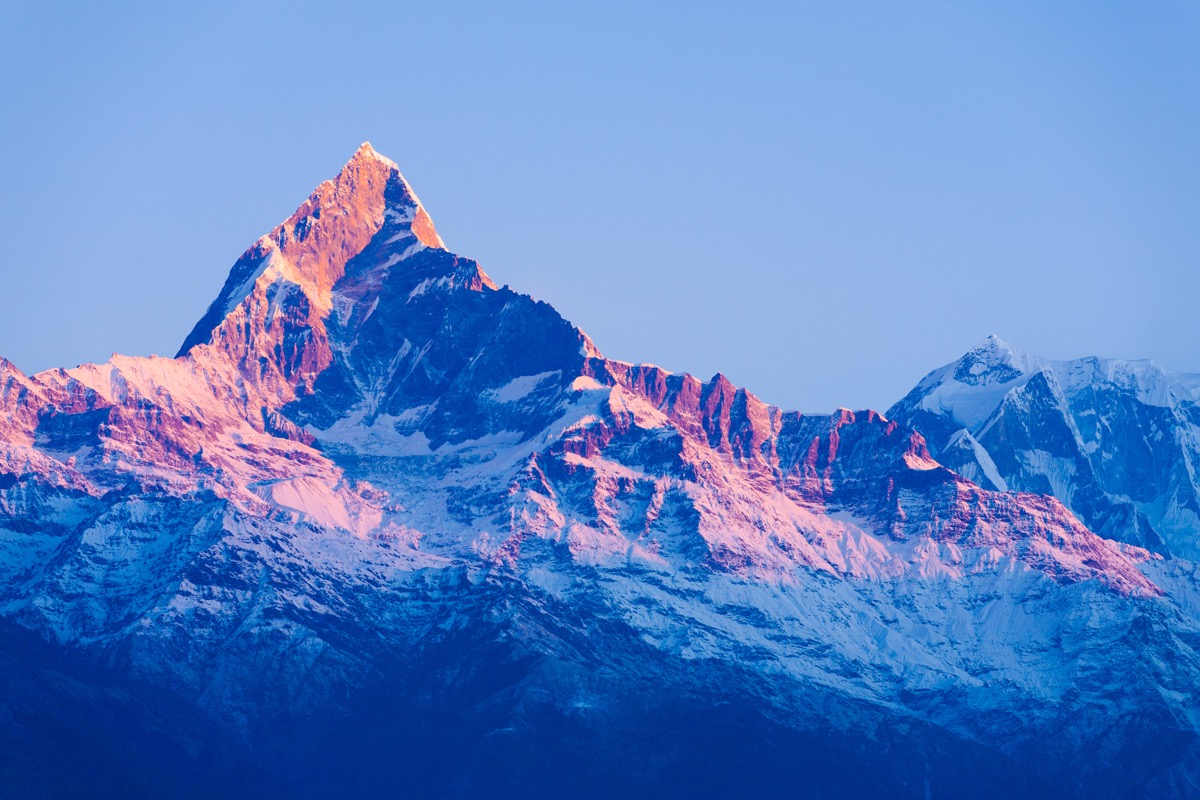
We may think of snow as being pristinely white, but technically, it's completely colorless. Despite that fact, tiny particles of dust or algae can make snow appear to be a range of different rainbow-like colors, including yellow, orange, green, and even purple, according to The Old Farmer's Almanac.
5
And there's also pink watermelon snow that has a sweet smell and taste.

Spotting colorful snow of any shade is exciting, but if you happen to see pink snow then you can impress your friends by letting them know it's called watermelon snow, according to The Old Farmer's Almanac. Along with sharing the tasty fruit's pleasant pink shade, the snow also smells sweet. But that doesn't mean that you should eat it! The rosy hue is often due to algae, which can make you sick if you ingest it.
6
Snow rollers are self-forming snowballs.
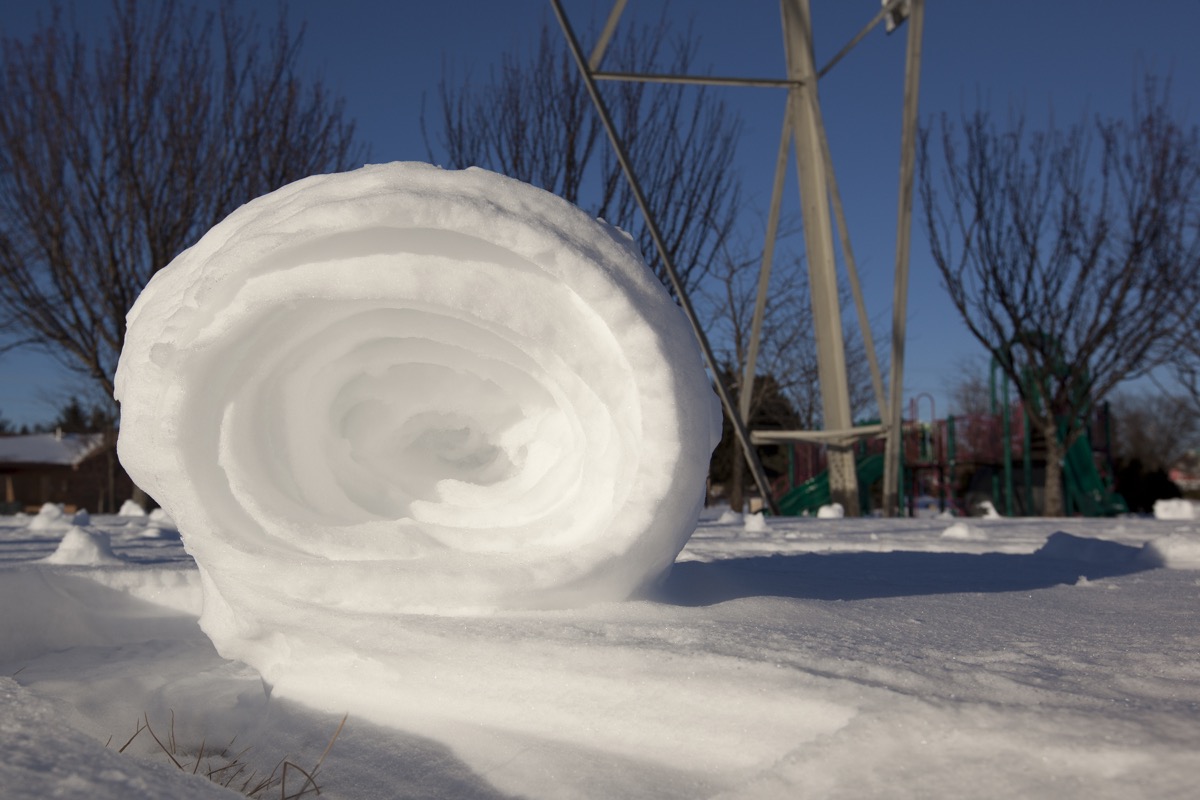
Don't feel like rolling your own snowballs this winter? Then you'll want to keep an eye out for snow rollers, which, according to National Geographic, are "the cold weather equivalent of tumbleweeds." Apparently, "wind pushes snow across the ground, gathering it into a hollow cylinder" and creating these self-forming snowballs.
7
Some cities use beet juice, beer waste, and pickle brine on icy winter roads instead of salt.
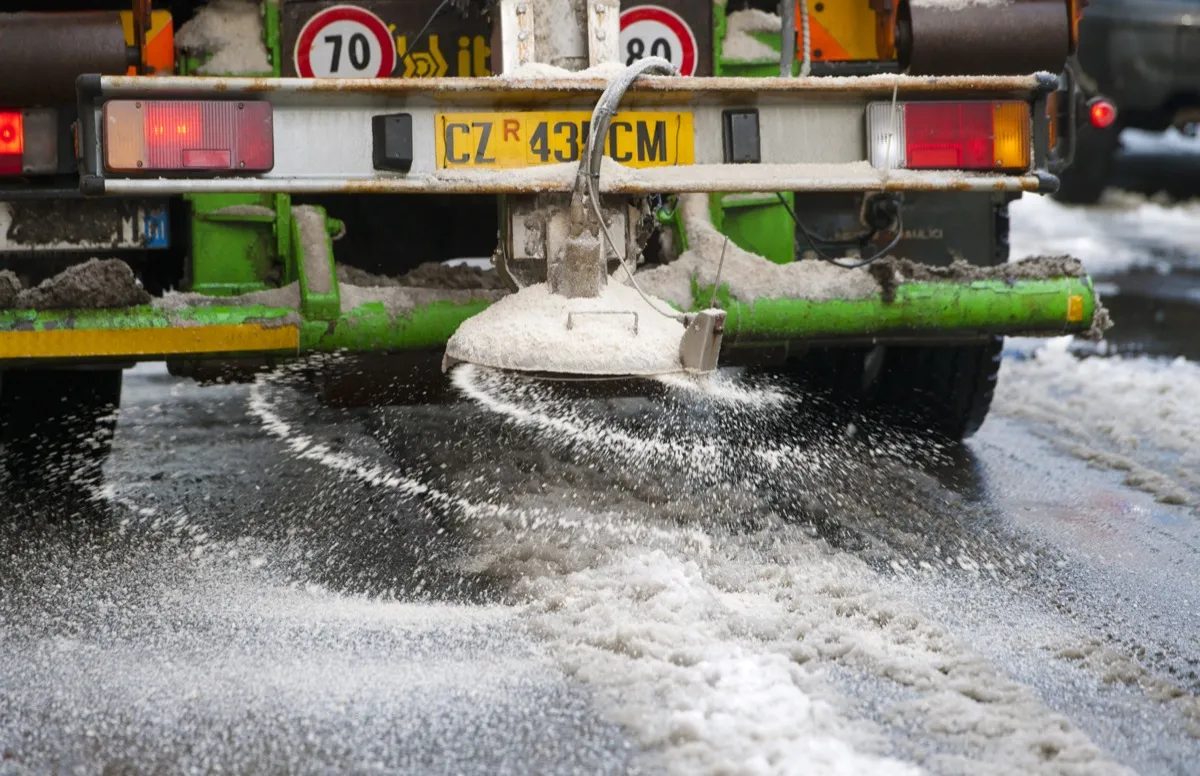
For years, it's been common practice to use salt on roads and sidewalks in order to melt slippery—and potentially dangerous—ice. But, salt can actually be harmful to the environment and in an effort to be more eco-friendly, some cities are using alternative methods to melt ice, such as beet juice, beer waste, and pickle brine, according to National Geographic. A county in Wisconsin, a state famous for its dairy, is even using cheese brine to prep roads before snowstorms!
8
In Finland, you can stay in glass igloos during winter to watch the Northern Lights.
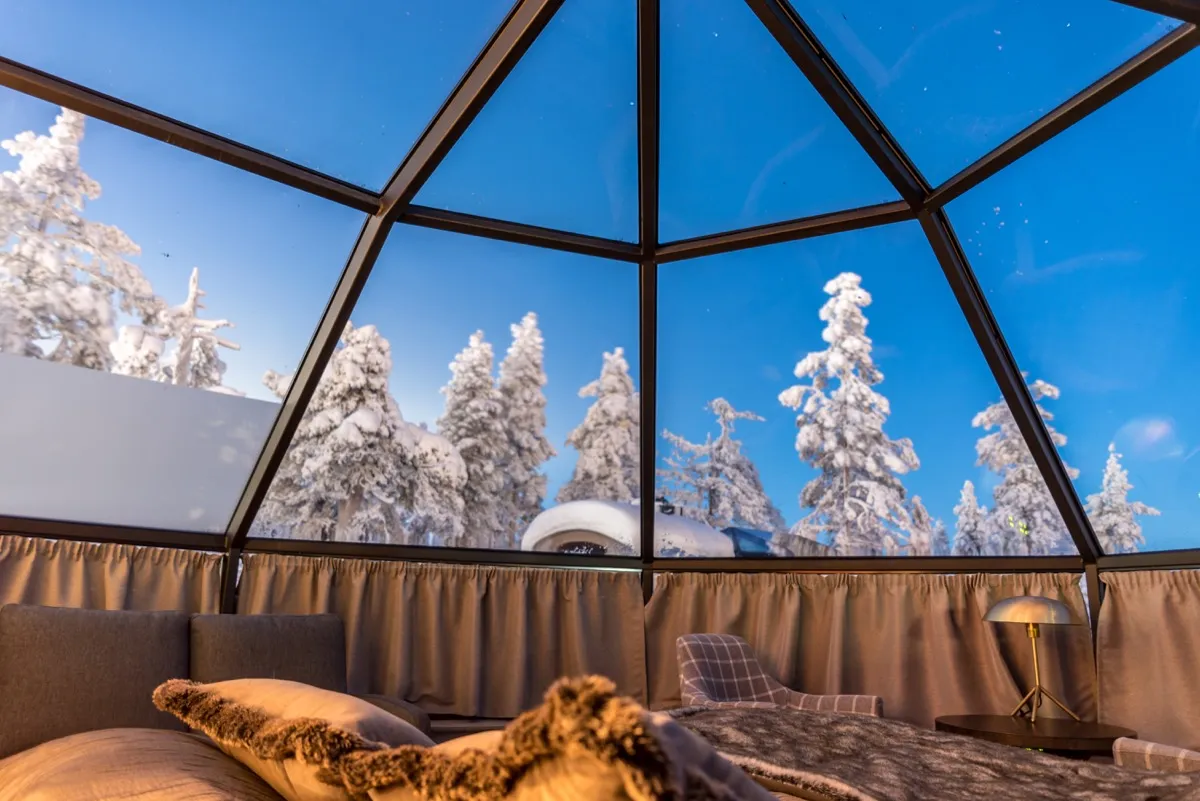
If you're looking for a memorable winter getaway, consider booking a trip to Finland's Igloo Village Kakslauttanen. Guests can opt to stay inside of glass igloos that offer breathtaking views of the scenic winter landscape, as well as the Northern Lights that sometimes flash in the night sky above.
9
There's an annual International Hair Freezing Contest in Canada every February.
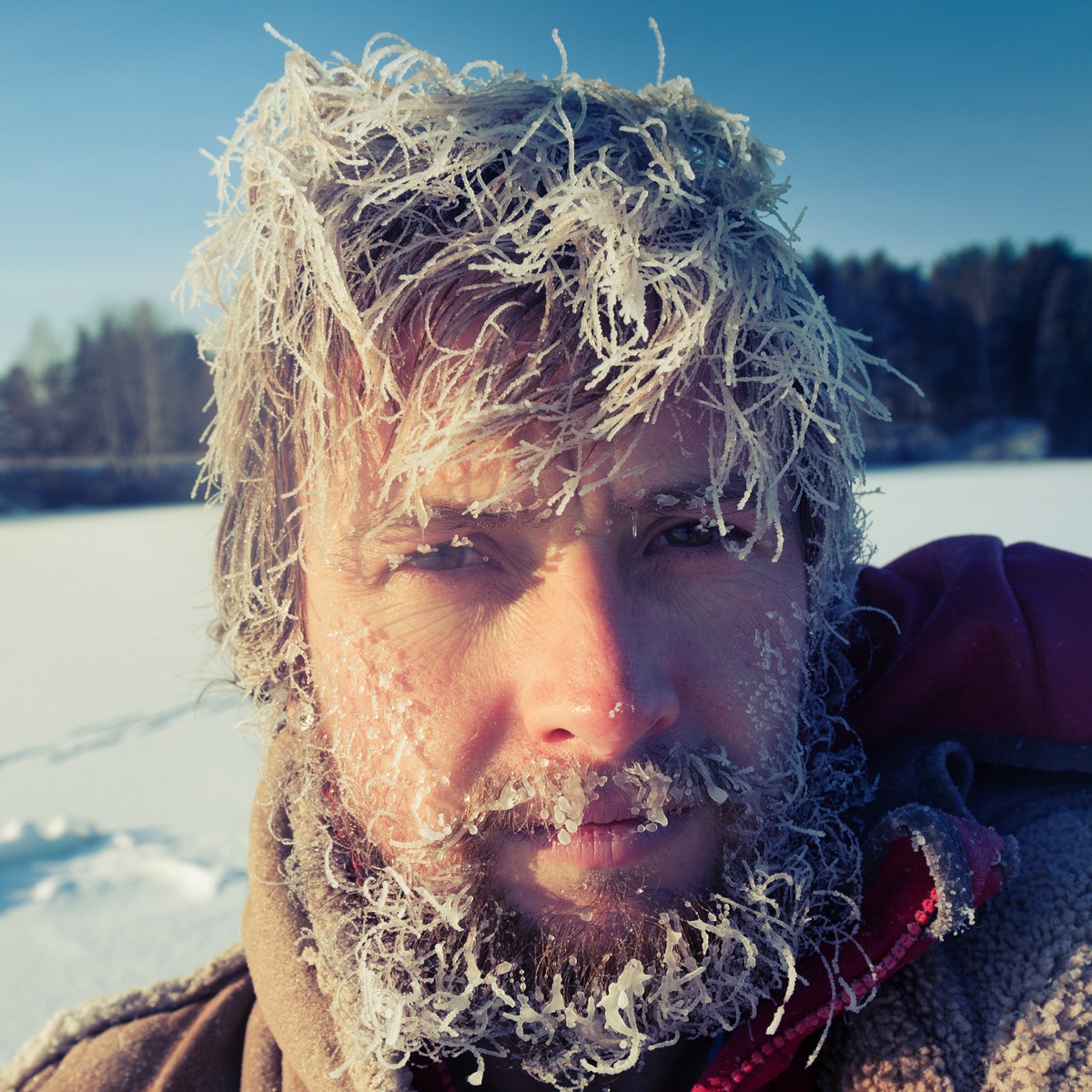
If you've ever taken a shower and gone out into cold weather before your hair is fully dry, then you're likely aware that it can freeze if the temperature is low enough. And while you probably don't consider frozen hair to be your choice 'do, it happens to be the exact goal of participants of the annual International Hair Freezing Contest, which takes place every February. "The purpose of the contest is to create the most creative frozen hairdos possible; you soak in the hot springs and allow the steam to accumulate on your head while the cold air freezes your hair," according to the event's website. The intricate icy hairstyles that competitors have donned over the years since the contest began in Canada's Yukon territory in 2011 are really something to see.
10
Stonehenge was set up to frame the sunset of the winter solstice.
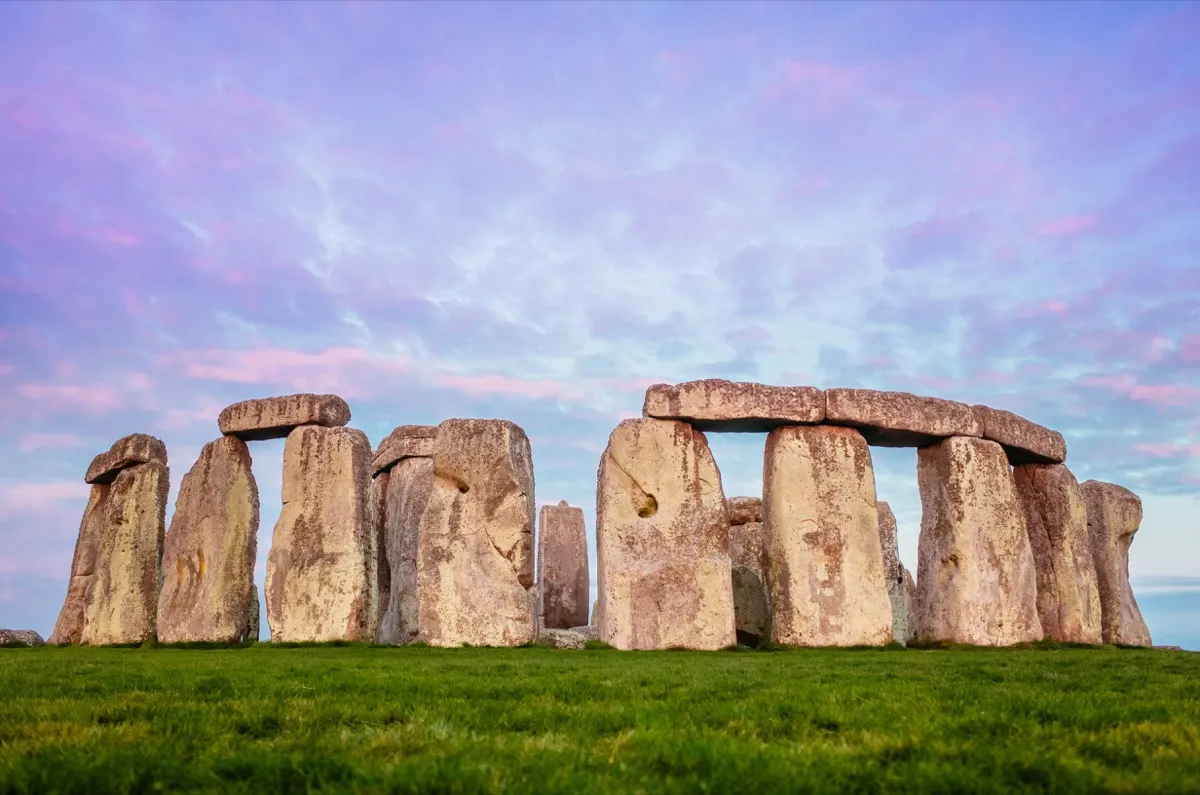
Stonehenge has stood for thousands of years, and each year, the prehistoric English monument helps to mark the winter solstice. "Although the tallest trilithon at the monument is no longer standing, the sun would have set between the narrow gap of these uprights during the winter solstice," according to English Heritage.
11
Shovel racing started in New Mexico in the 1970s.
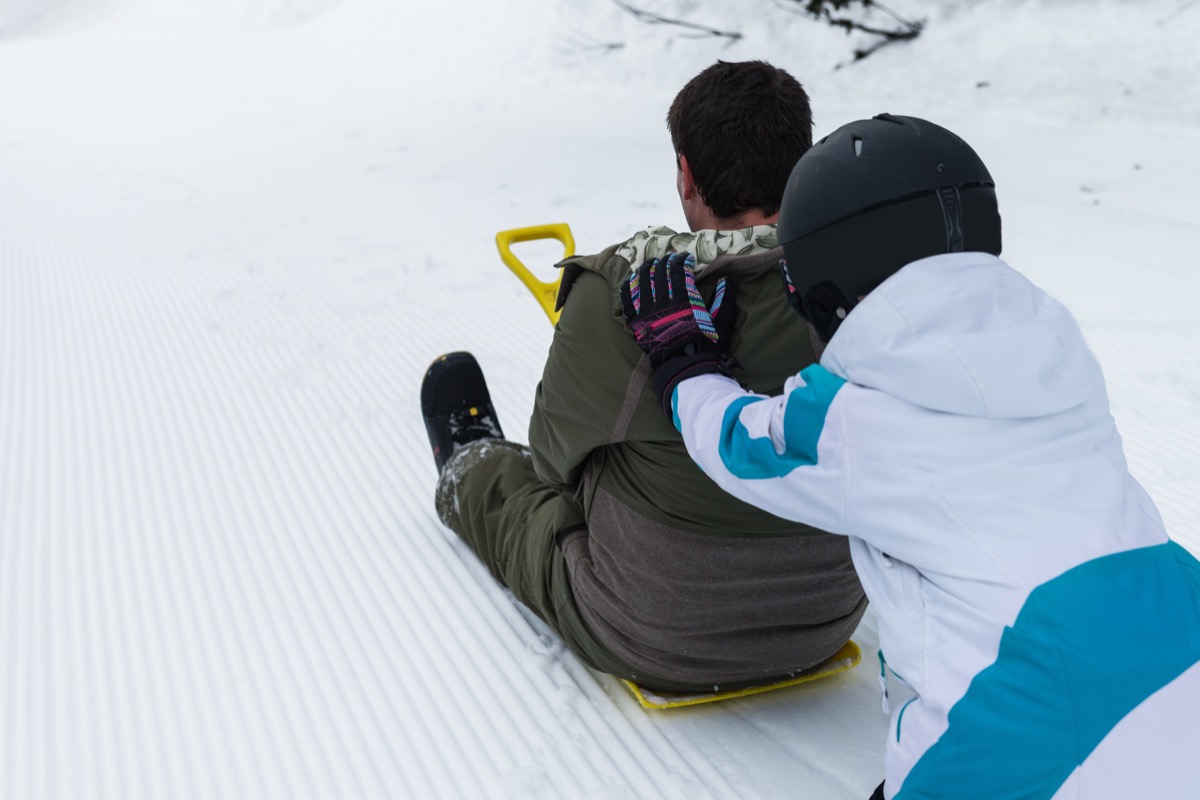
Back in the 1970s, lift operators in the ski resort town of Angel Fire, New Mexico, used to slide down the slopes on their shovels instead of walking all the way to the bottom of the snowy hills. This sparked competitions that were the beginning of shovel racing, which is now a popular winter sport, according to Wired.
And speed is the name of the game. In 2012, Angel Fire resident Chad Denney set a new record in the men's division. He made it down the 1,000-foot course in 13.5 seconds, with a radar gun clocking his speed at 73.64 mph. Even kids as young as six years old get in on the action, sometimes reaching top speeds of 44 mph!
12
There are plenty of flowers that bloom in the winter.
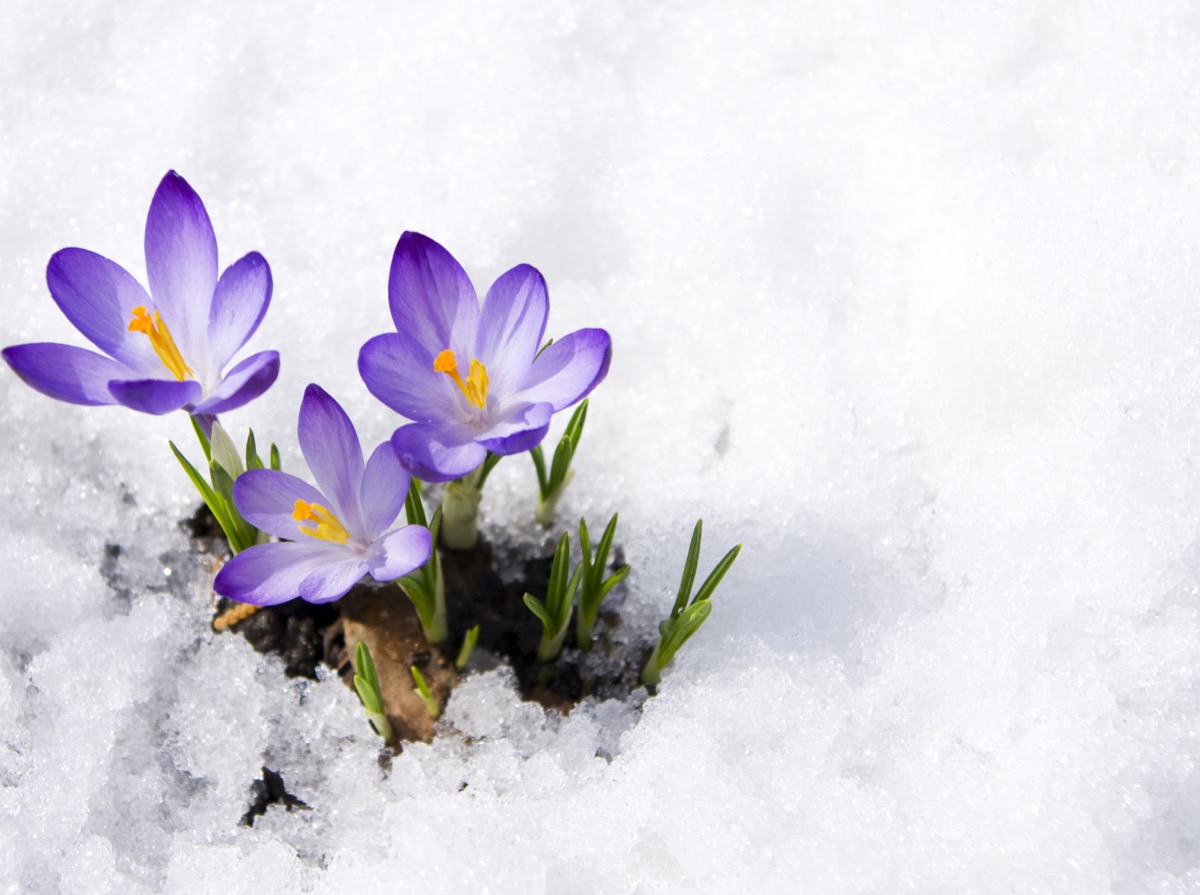
You might think that there's not much you can do to feed your gardening fix when the weather turns cold, but there are actually plenty of flowers that bloom in winter. If you're looking to dig into some dirt and don't want to wait until spring, try growing winter pansies, lenten roses (which are also known as Christmas roses), winter aconite, and snowdrops.
13
Snow comes in five categories.
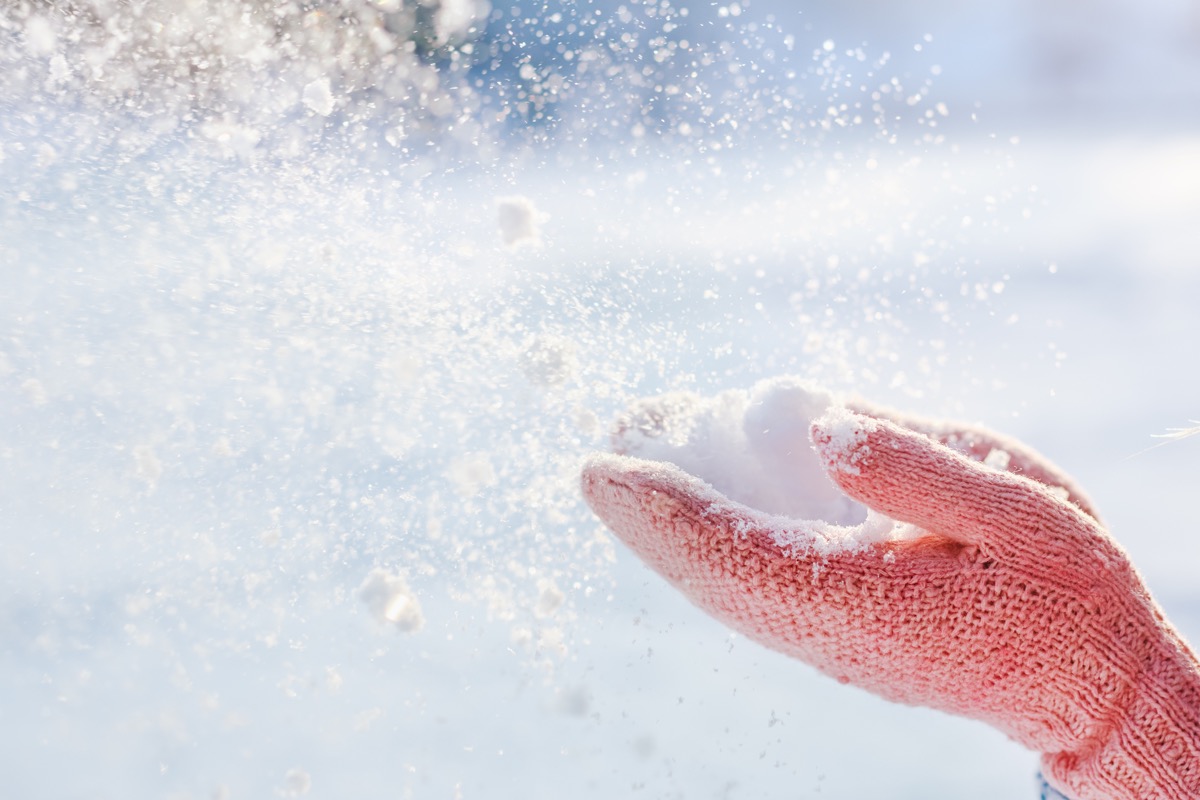
Most kids can probably tell you that some snow is loose and not ideal for crafting the perfect snowball, while other snow packs together tightly and easily for a strong foundation of some winter ammo. But there are actually five different types of snow, which are characterized by the amount of water in their consistency. There is dry snow (zero percent water), moist snow (less than 3 percent), wet snow (between 3 percent and 8 percent), very wet snow (between 8 percent and 15 percent), and, finally, slush, or snow that is 15 percent water.
14
At least a septillion snowflakes fall from the sky ever year.
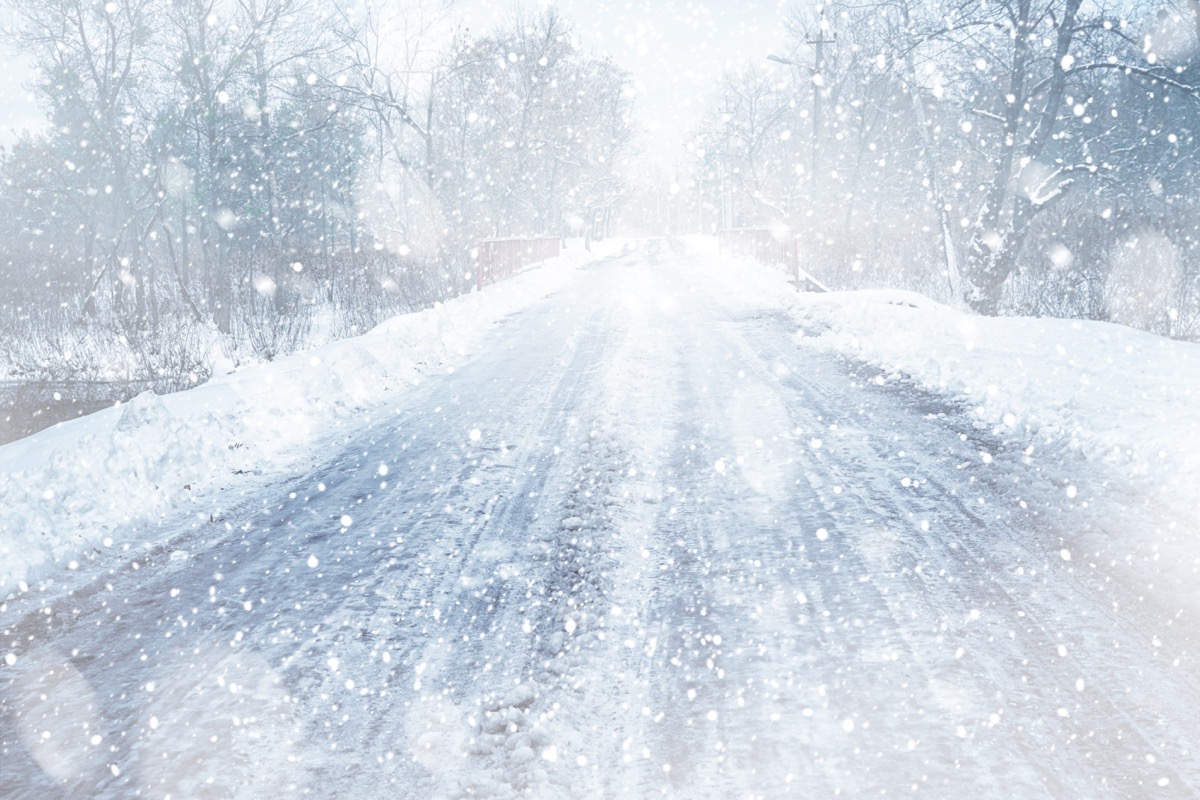
Every winter, more than a septillion snowflakes fall down to Earth, according to the Library of Congress. To put it another way, that's 1,000,000,000,000,000,000,000,000 snowflakes or a trillion trillion.
15
And they fall at speeds of one to six feet per second.
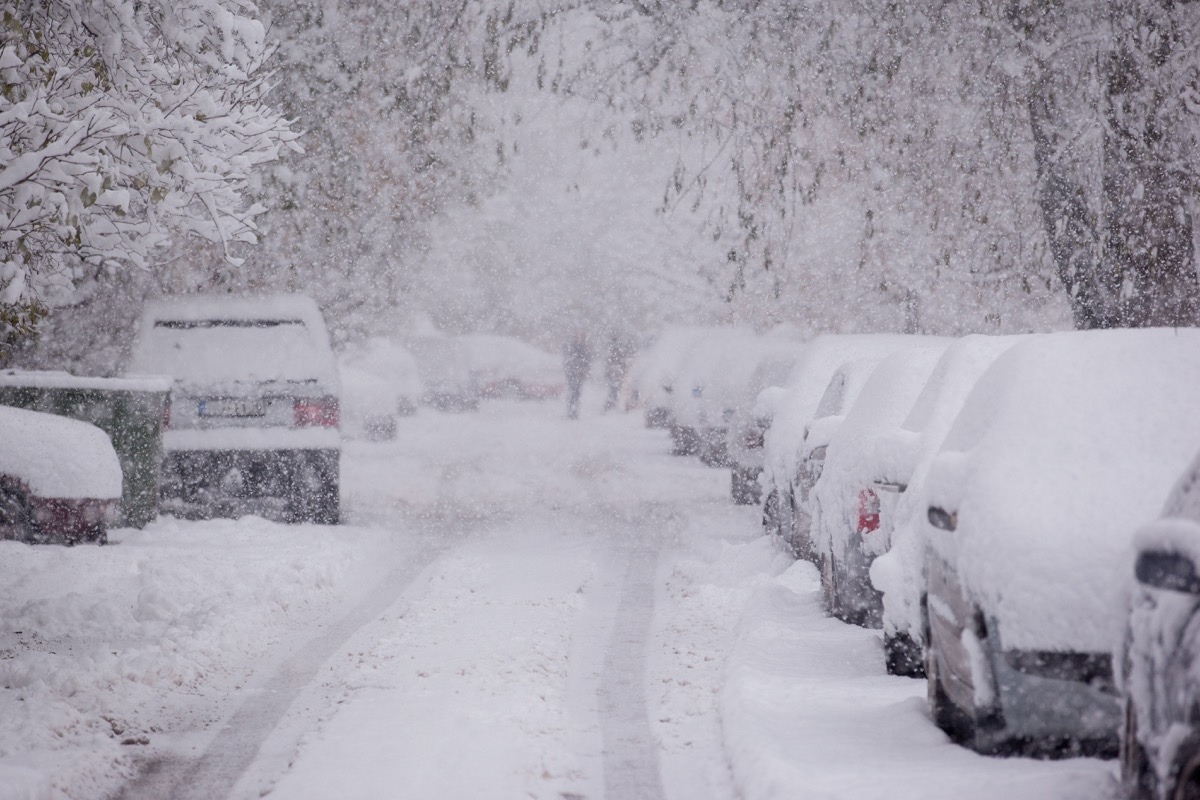
Some snowflakes appear to zoom down from the sky with the power of blizzard-force wind, while others seem to float down to Earth like a feather caught in a breeze. However, the truth is, according to the Chicago Tribune, nearly all—about 95 percent—of snowflakes fall at speeds that are between one and six feet per second.
16
Snowflakes almost always have six sides.
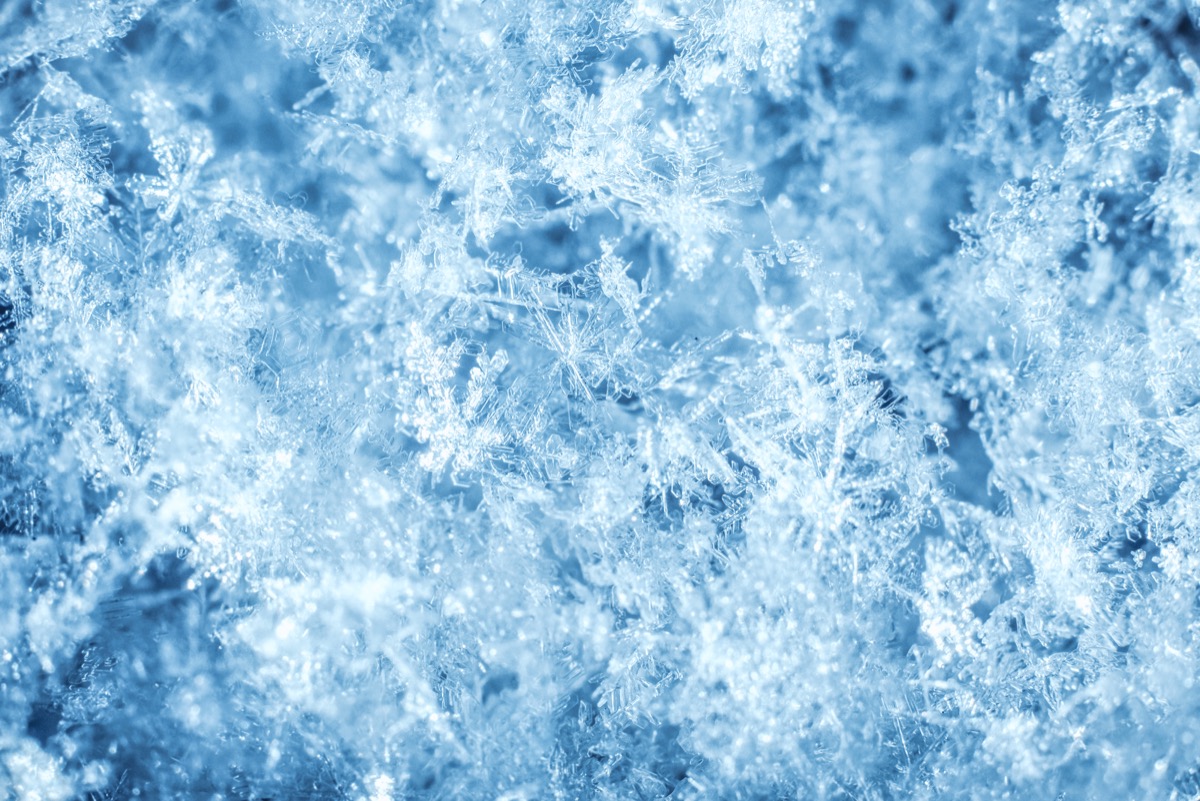
Snowflakes may look like nature's own little works of art, but their core shape can actually be explained by science. Snowflakes are made of water, and water molecules bond together in certain ways, usually with six sides. "The two slightly negative areas of the oxygen can each bond with a slightly positive hydrogen from another water molecule," engineer Linda Gaines explained in Double X Science. "When all four slightly charged areas have each bonded with another water molecule via hydrogen bonding, the result is a tetrahedral (four-sided pyramid) shape. As the water freezes, these tetrahedrons come closer together and crystallize into a six-ring or hexagonal structure."
17
The largest snowflake on record measured 15 inches wide and 8 inches thick.
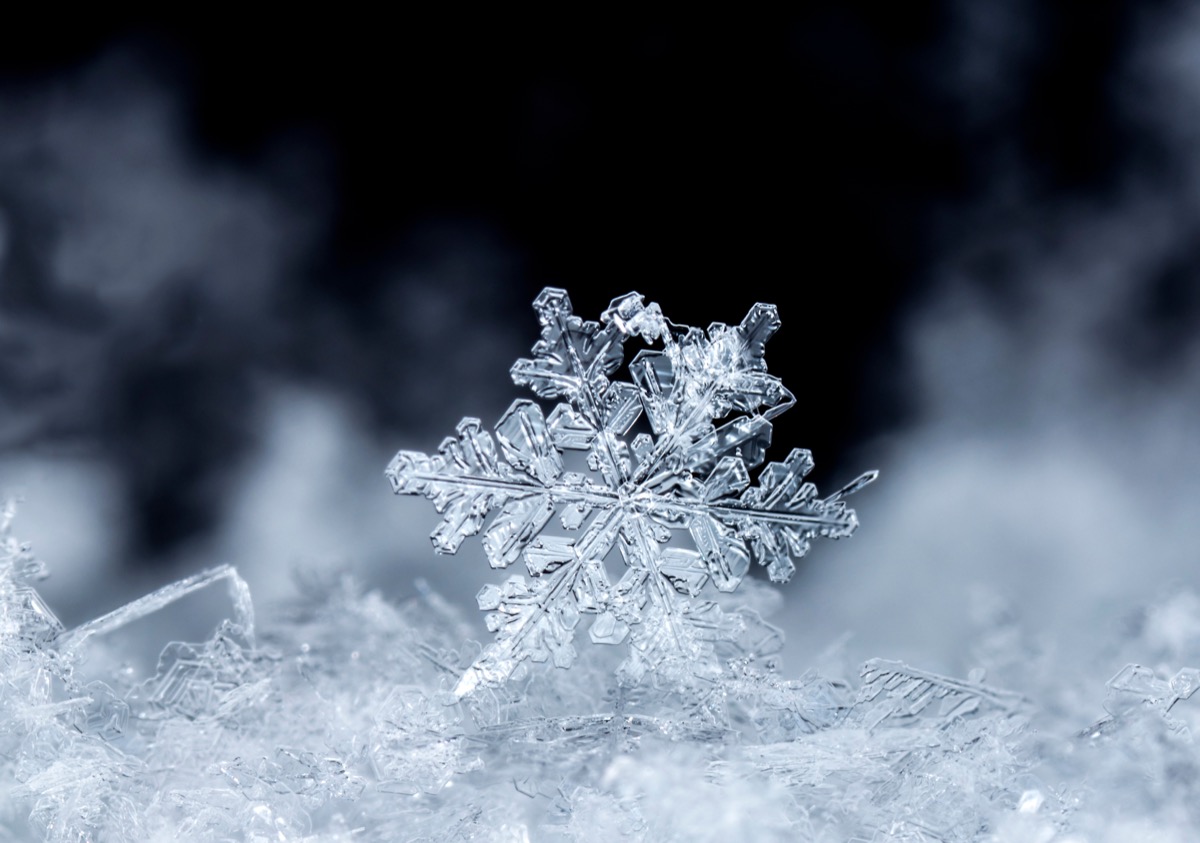
Snowflakes tend to lean towards the delicate and diminutive end of the size spectrum. But in 1887, a ranch owner in Fort Keogh, Montana, allegedly found the largest snowflake ever recorded, which measured 15 inches wide and 8 inches thick, according to The New York Times.
But was it really one snowflake? "What do big snowflakes look like? A jumble of little flakes," says Sandra Yuter, a faculty fellow at North Carolina State University's Center for Geospatial Analytics. "In natural conditions, it is highly unlikely that the record snowflake from 1887 was one giant crystal. Much more likely is that it was a jumble of crystals together."
18
The tallest snowperson on record stood over 122 feet.

Building a snowman is a classic winter activity, but the residents living in Bethel, Maine, took the tradition to the extreme in Feb. 2008 when they spent a month building a Guinness World Record-setting snowperson—who was, in fact, a snowwoman named Olympia. The frigid figure was made up of 13 million pounds of snow and featured eyelashes that were made from eight pairs of skis, an eight-foot-long nose made from chicken wire and painted cheesecloth, lips made from five red car tires, and arms made from two 30-foot-tall spruce trees. Olympia was also decorated with three giant truck tires as buttons, a 130-foot scarf, a 48-foot-wide fleece hat, and a snowflake pendant that was six-and-a-half feet wide. In total, the impressive snowwoman's height measured just over 122 feet, which is just a few feet shorter than the Statue of Liberty.
19
Westerners are most likely to say winter is their favorite season.
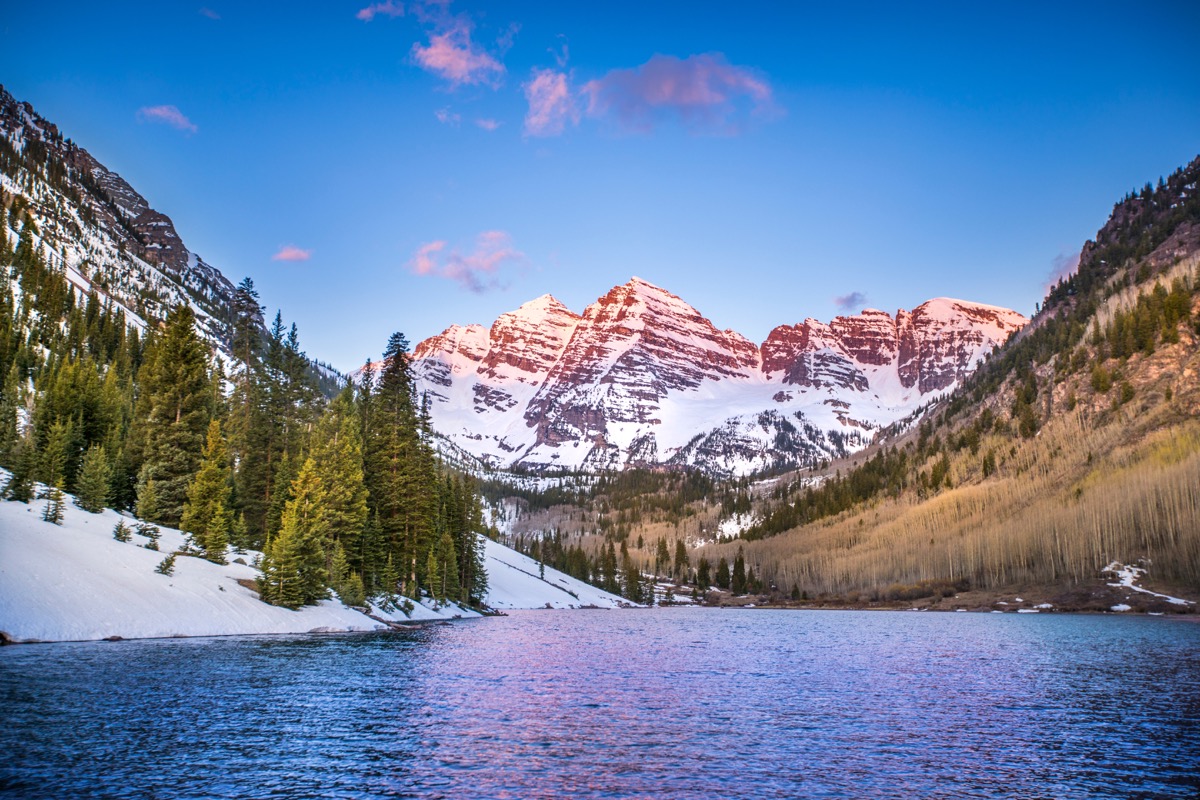
While some people prefer sunny summer days, the awesome aspects of autumn, or the beautiful bloom of spring, a small number of Americans—about 7 percent—say winter is in fact their favorite season, according to 2013 data from YouGov. Overall, Westerners were most likely to love winter, with 14 percent preferring the coldest season of all.
20
Winter increases your appetite.

Do you find that you're hungrier when it's cold outside? Or notice cravings for more hearty meals than you do during other times of the year? That's because, when it's cold, your body needs to work harder to keep your temperature at a comfortable level, which requires more energy to burn. To supply that extra energy, your body needs more calories, and that means you might notice an increase in your appetite.
21
The most people making snow angels simultaneously was nearly 9,000.
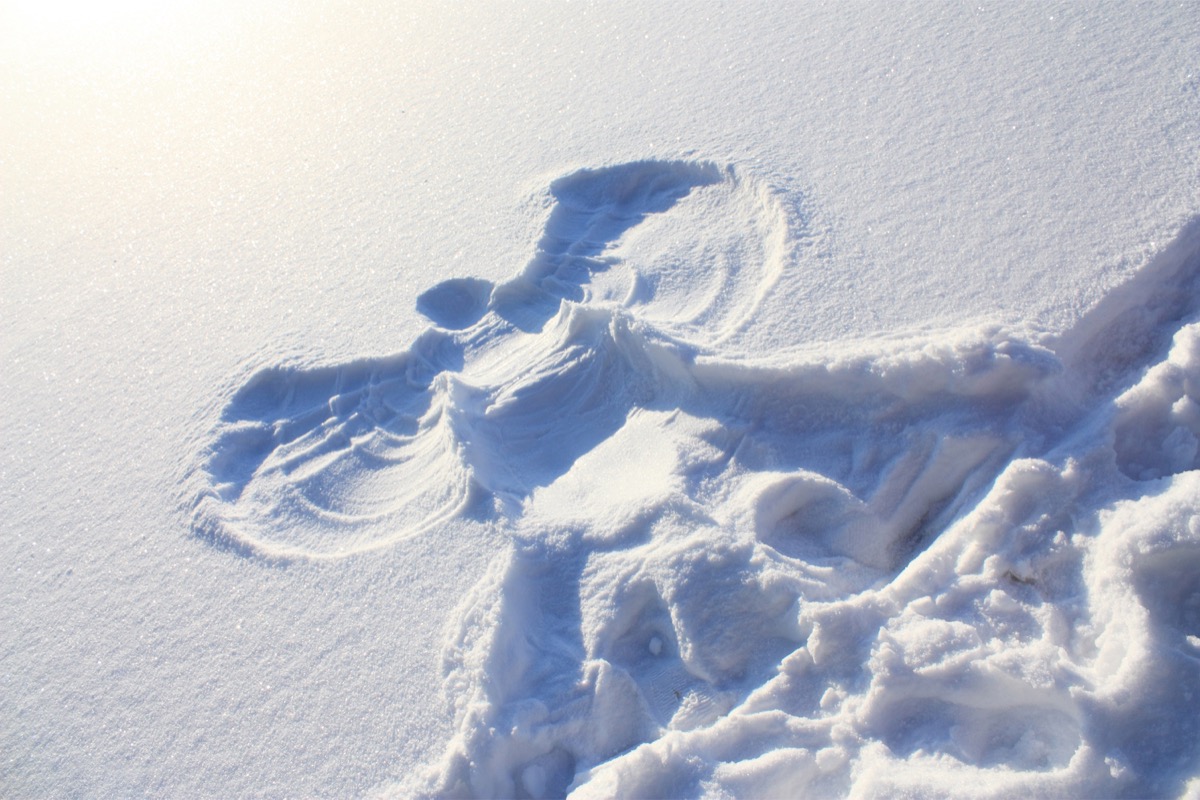
We've all made one at some point, flopping down into the snow and making swooping motions with our arms and legs in order to leave behind an impression resembling an angel. But, on Feb. 17, 2007, the people of Bismarck, North Dakota, took the activity to a whole new level when 8,962 angel-makers converged to set the record for the most people making snow angels simultaneously.
22
The first Winter Olympics were held in the French Alps in 1924.
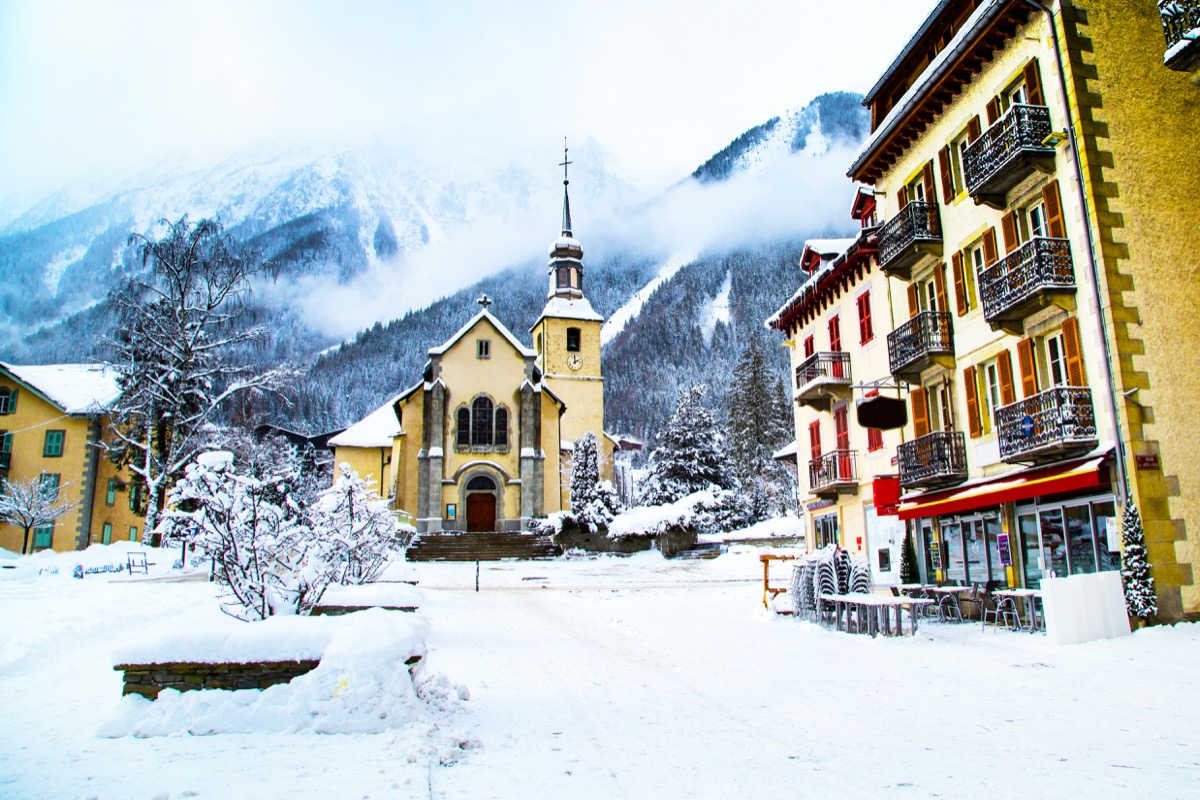
Every four years, some of the best athletes in the world come together to compete in the Olympic Winter Games and have been doing so since the first competition was held back in 1924 at the base of Mount Blac in a spot called Chamonix, according to History.com. There were a total of 14 events across six different sports, including ski jumping and bobsledding. And while it was known as the International Winter Sports Week at the time, it was officially renamed the Winter Games before the second competition took place in 1928 in St. Moritz, Switzerland.
23
And ski ballet was once a sport in the Winter Olympics.
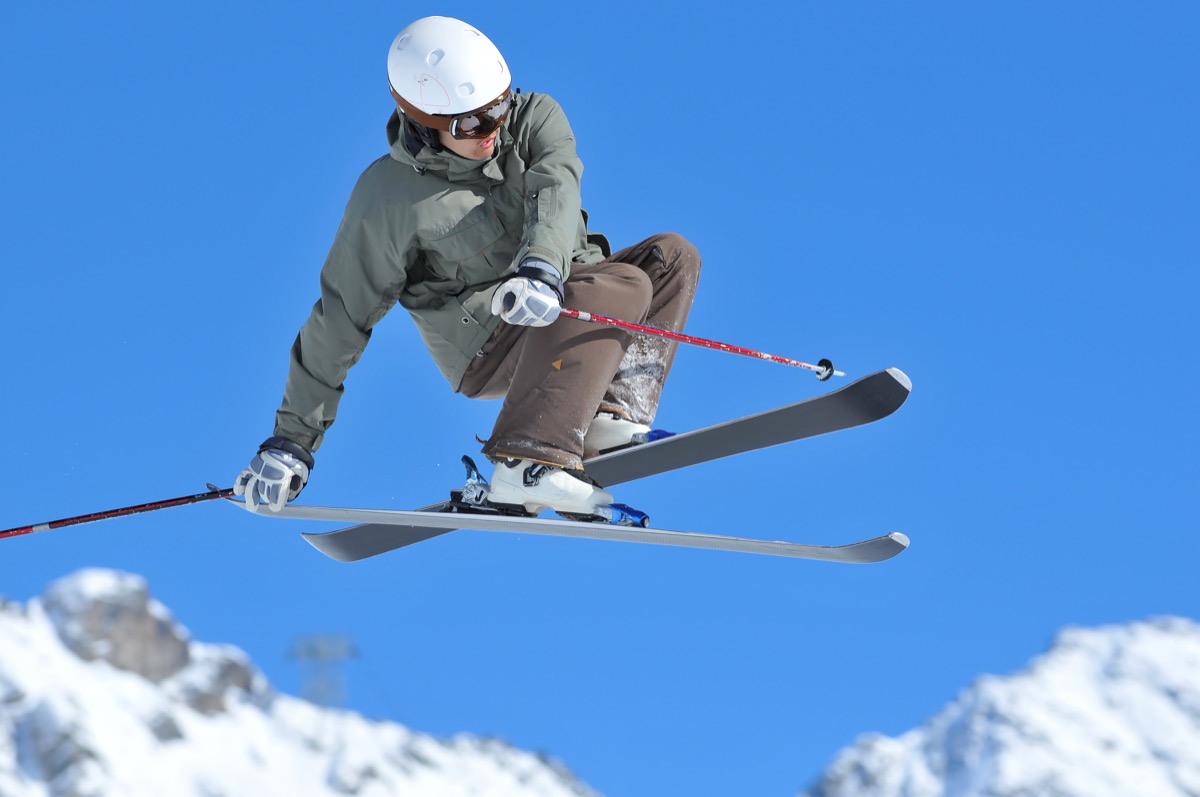
Ski ballet may sound like an odd combination of two athletic activities not typically mentioned in the same sentence, but once upon a time, the sport was part of the Winter Olympics. True to its name, ski ballet featured the same kind of spins, jumps, and movements that you'd see in the dance art form, only done on skis on a snowy mountain. "Ski ballet was featured as a 'demonstration sport' at the 1988 Winter Olympics in Calgary, but it didn't resonate particularly well with audiences," according to Mashable. "After another disappointing appearance at the 1992 Games, it faded into Olympics history. In 2000, it was discontinued entirely."
24
The Earth is closest to the Sun during winter.
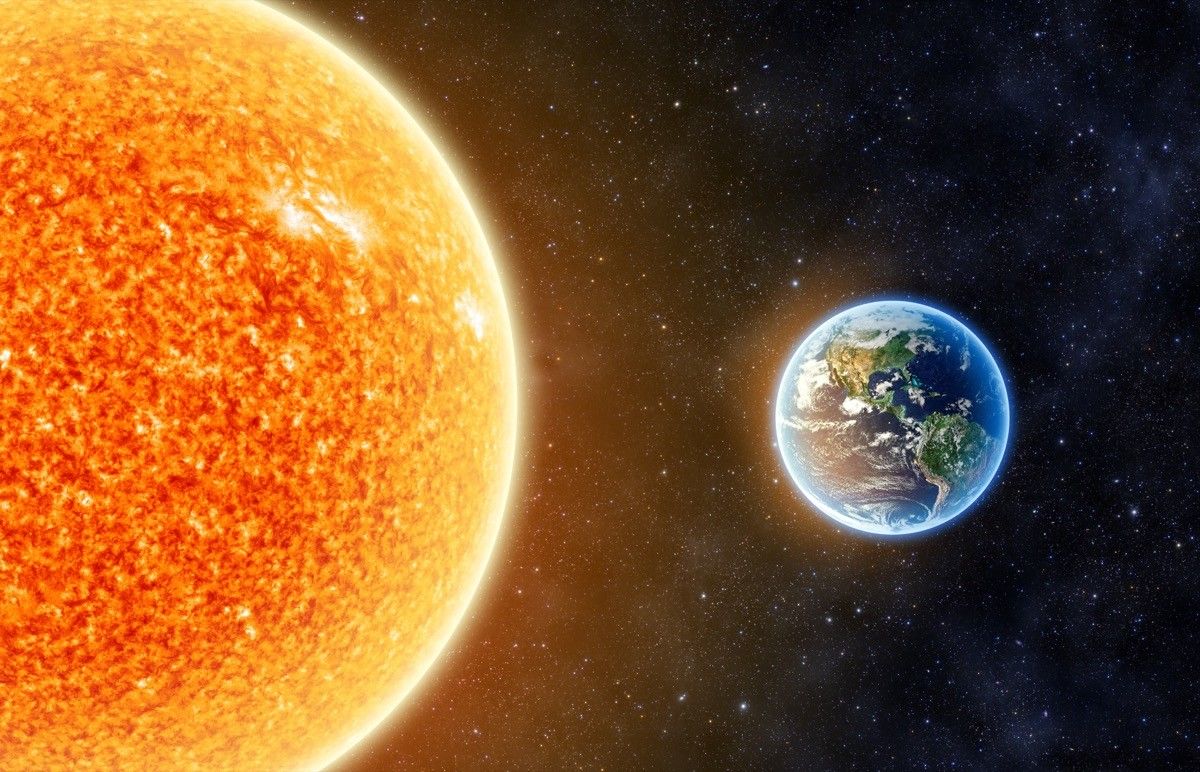
It would make sense to assume that our planet is closer to the sun during summer when it's hot, but the opposite is actually true—at least, for those in the Northern Hemisphere. According to Space.com, "Earth's orbit is not a perfect circle. It is elliptical, or slightly oval-shaped. This means there is one point in the orbit where Earth is closest to the Sun, and another where Earth is farthest from the Sun. The closest point occurs in early January, and the far point happens in early July."
25
The largest snow maze on record was more than 30,000 square feet.
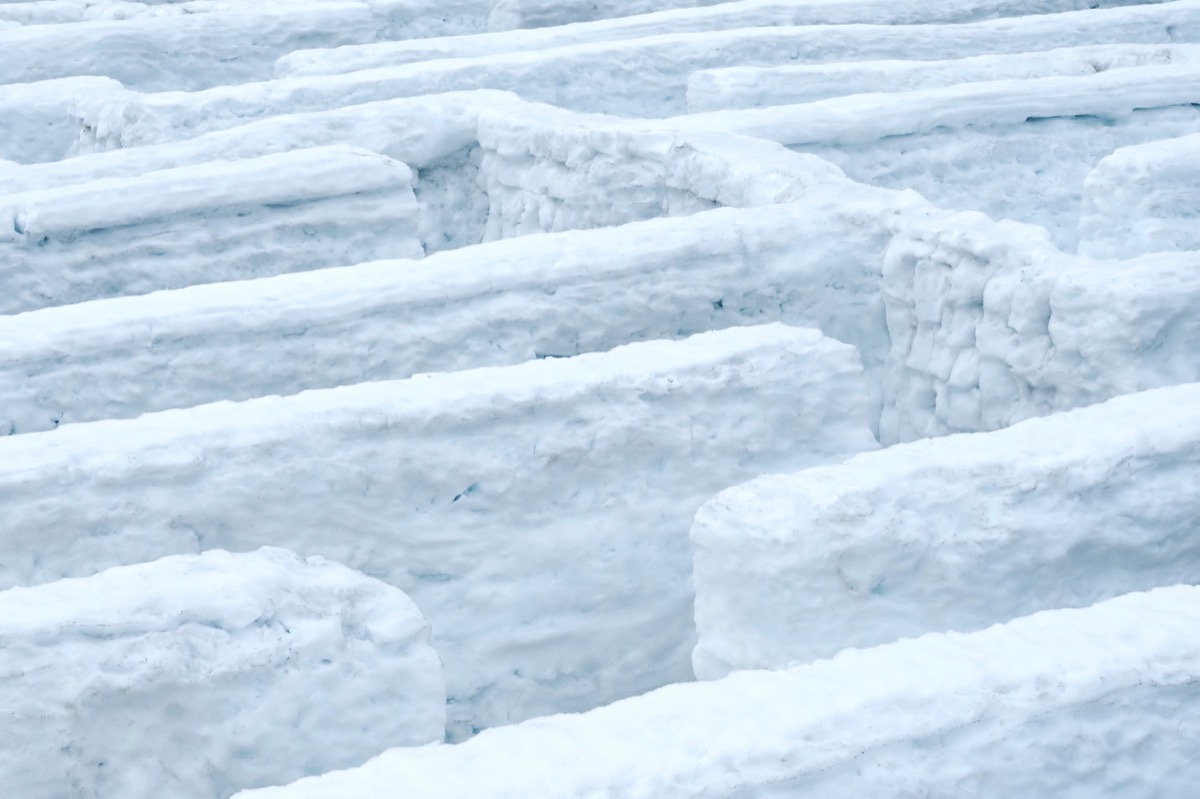
A hedge maze is a great activity to take on in the summer and a corn maze is fun in the fall. But winter is the only time to try your luck at finding your way through a maze made of snow. The biggest icy labyrinth was constructed by A Maze in Corn in St. Adolphe, Manitoba, in Canada in Feb. 2019; the largest snow maze ever measured 30,021 square feet.
26
The Portland Winter Light Festival includes nearly 115 illuminated art installations.
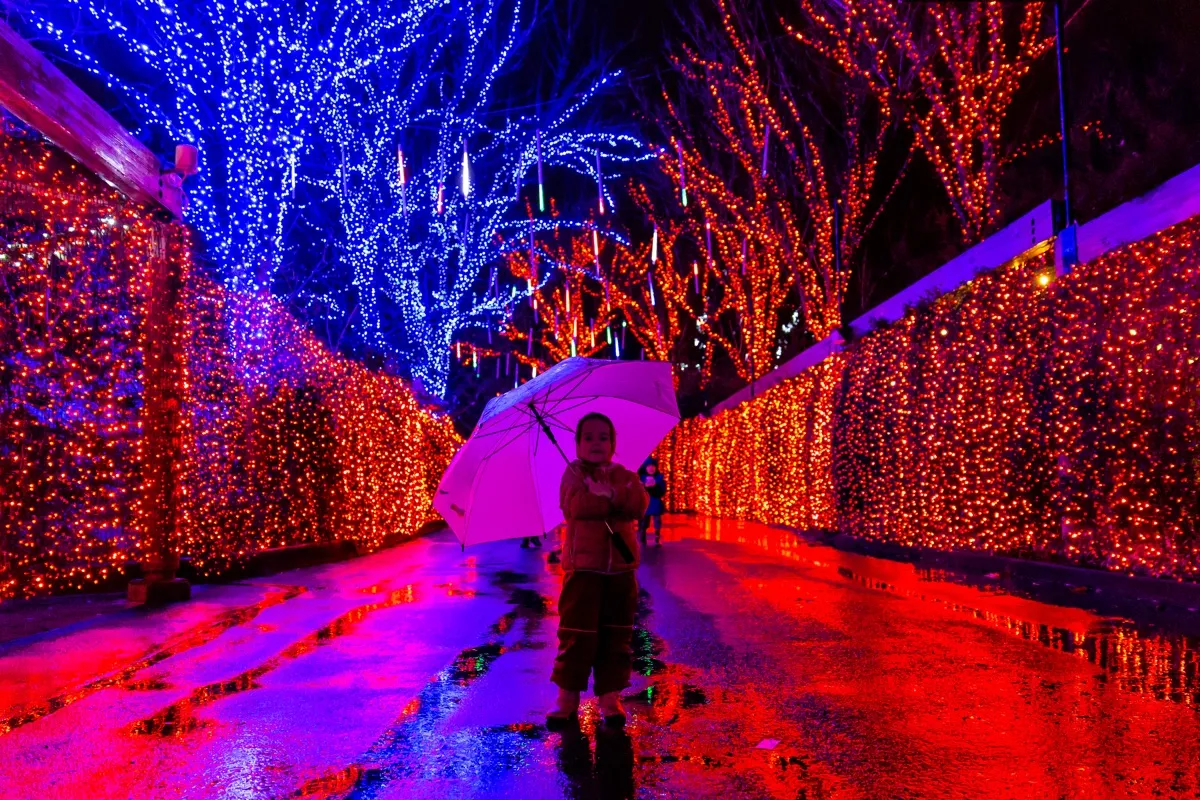
Winter is a dark season and can lack the kind of sunshine that helps to brighten our days in the spring and summer months. Luckily for those in Oregon, there's the annual Portland Winter Light Festival. In 2019, according to the event's website, the festival "showcased over 114 illuminated art installations, over 60 vibrant performances and live events, educational programs, stunning kinetic fire sculptures throughout [the] city, and … over 150,000 guests." Attendees witnessed wonders such as fire spheres, twinkle trees, a Psychedahlia Garden, and Lite Brite Remastered.
27
The largest snowball fight ever involved 7,681 people.
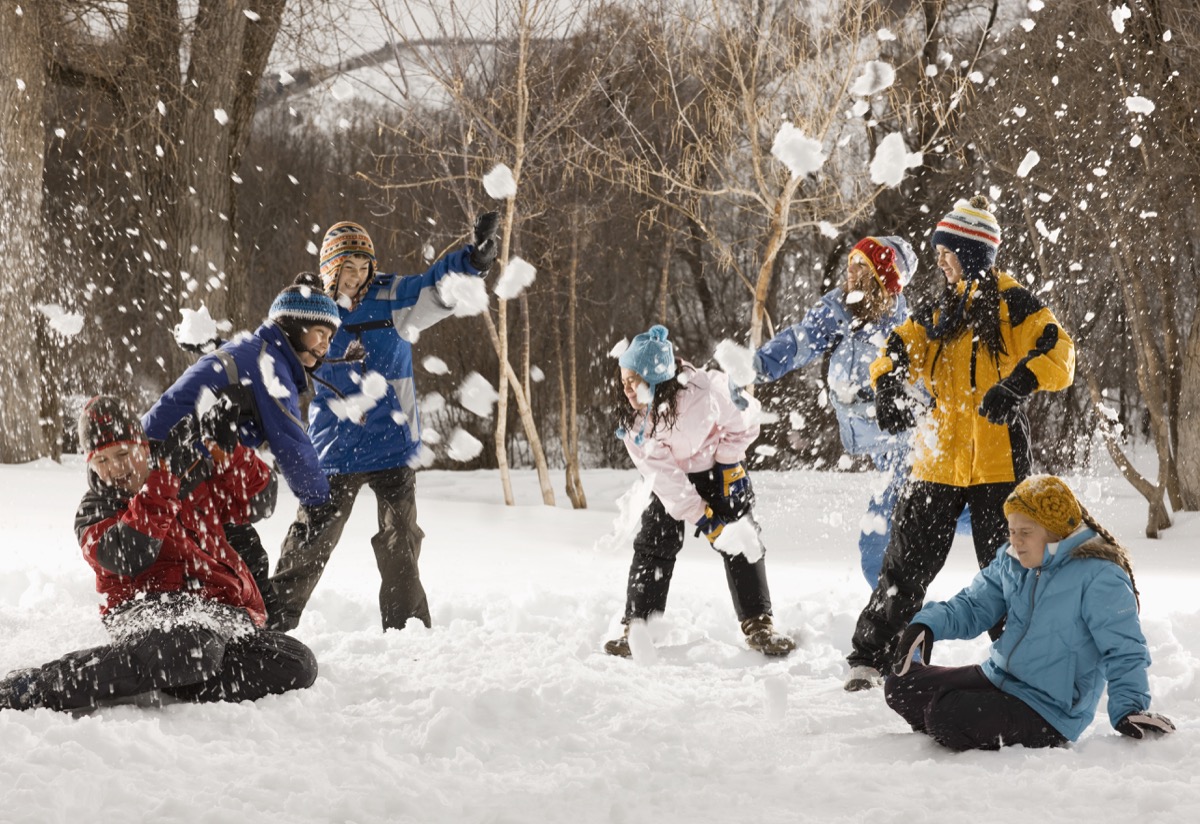
On Jan. 31, 2016, 7,681 people faced off in the largest snowball fight ever on record in Saskatoon, Saskatchewan, Canada. The event was a send-off celebration for the Canadian team bound for Japan to partake in the Showa Shinzan International Yukigassen World Championships for professional snowball fighting.
28
People once believed that birds flew to the moon for the winter.
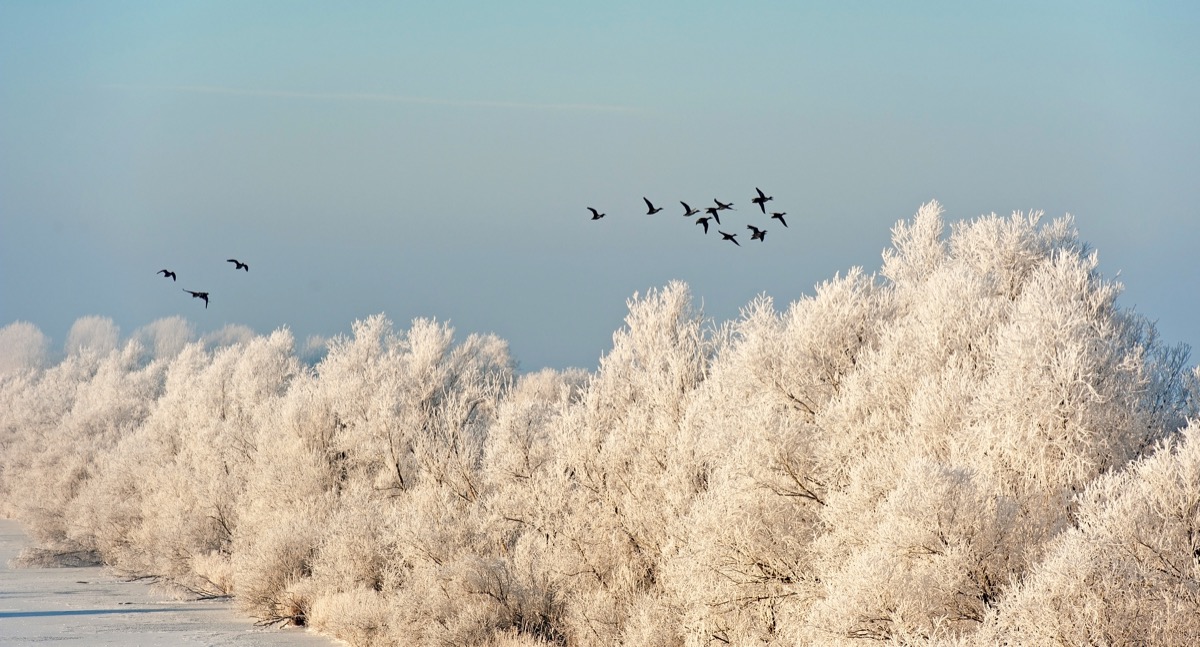
Nowadays, it's a commonly known fact that some birds fly to warmer climates for the winter in order to escape the frigid temperatures. However, up until the 19th century, some people—including Aristotle—believed that birds spent the cold season in hibernation at the bottom of the sea. Still, others believed that they took a much farther trip and flew to the moon for the winter, according to Atlas Obscura.
29
Winter "desire paths" can be spotted in the snow.
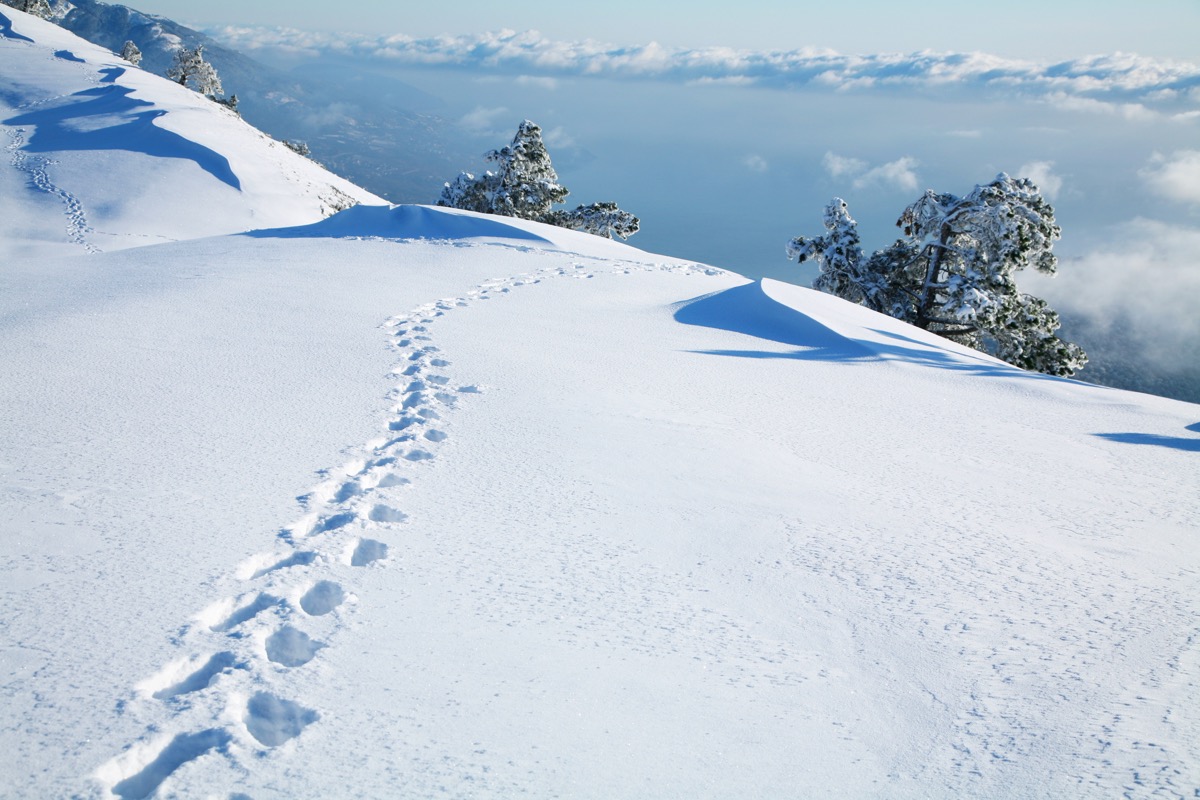
After a snowfall, if you are able to take a look at a big stretch of snowy land around you, you may spot a "desire path," the name given to "paths [and] tracks made over time by the … feet of walkers, especially those paths that run contrary to design or planning," according to writer Robert Macfarlane. Basically, it's a path that multiple people have chosen to walk that doesn't fall on a sidewalk or other walkway and, therefore, forms a new track.
30
In ancient Rome, an hour was 45 minutes in the winter and 75 minutes in the summer.
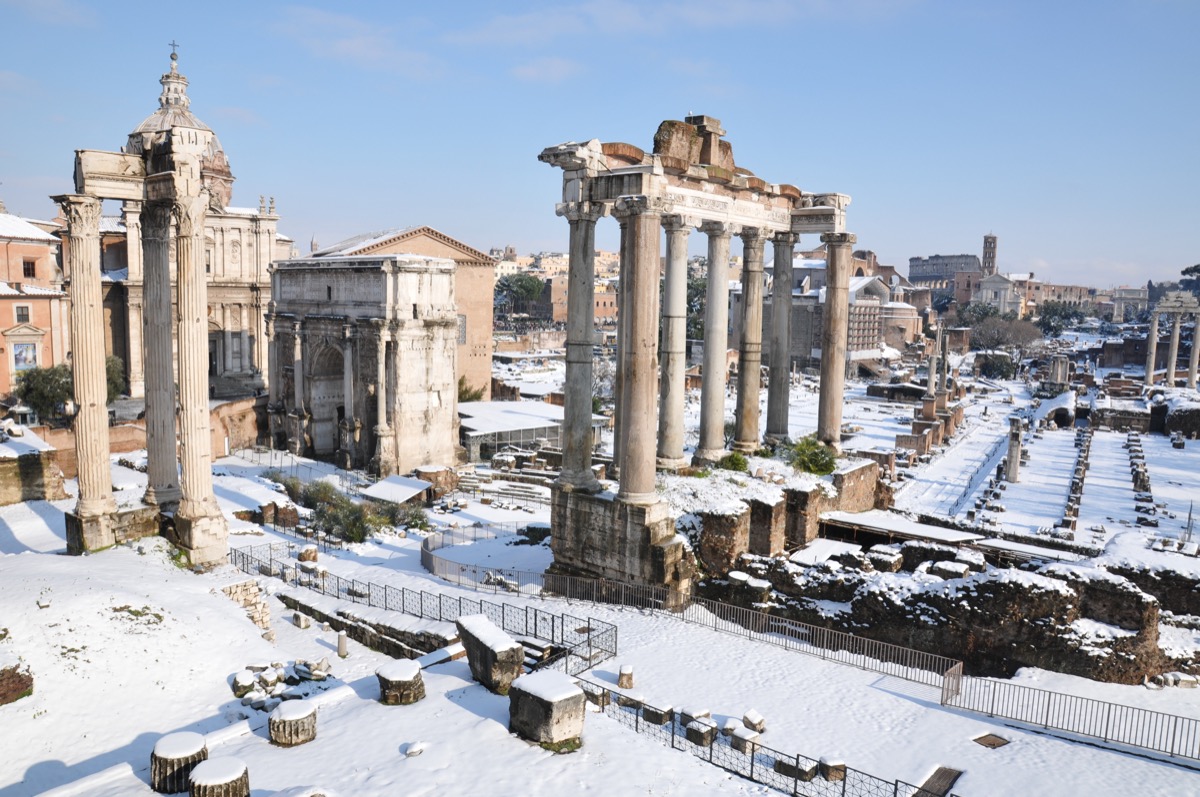
Winter days can appear to fly by thanks to the fact that the sun sets earlier, but in ancient Rome, hours really were shorter. Back then, people who tracked time "divided daylight and darkness into 12 increments each, a system they adopted from the Egyptians," according to Smithsonian. That meant that things changed time-wise when there was less daylight. While an hour was allotted 75 minutes in the summer, an hour was only 45 minutes in the winter.





